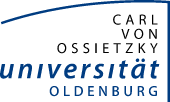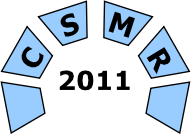
CSMR 2012
Workshops
The following workshops will be co-hosted at CSMR 2011:
- Wilhelm Hasselbring, Andreas Fuhr, Volker Riediger:
First International Workshop on Model-Driven Software Migration
Tuesday, March 1, 2011, from 11:00 to 17:30, A14 0-030 - Kostas Kontogiannis, Magiel Bruntink:
Fifth International Workshop on System Quality and Maintainability
Tuesday, March 1, 2011, from 9:00 to 17:30, A14 HS3
First International Workshop on
Model-Driven Software Migration
Wilhelm Hasselbring
University of Kiel, Germany
Andreas Fuhr,
Volker Riediger
University of Koblenz, Germany
Model-driven Software Development (MDSD) and Software Migration are two different approaches that had been under research separately. In recent years, researches found interesting analogies between both fields.
In software engineering, one of the key principles is abstraction, that is, focusing only on the important aspects while fading-out details. Model- driven software development (MDSD) aims at modeling these important aspects at different levels of abstraction. This allows to design software, starting with the "big picture" (abstract level) and approach more concrete levels by adding more details to the models until the system is implemented (concrete level).
Software migration aims at converting an old system (legacy system) into a new technology without changing functionality. This implies understanding, how the legacy system is working. For this purpose, legacy code must be leveraged into a higher level of abstraction in order to focus only on the important aspects.
At this point, model-driven software development and software migration meet. Migration projects can benefit from the vision of MDSD by abstracting legacy systems (reverse engineering), transform them and concretize the migrated system (forward engineering).
However, both fields of research are not yet entirely understood. Neither is the combination of both fields examined very well. The MDSM workshop will bring together latest research in the field of model-driven software migration approaches.
- Visit this workshop's website.
- View the Call for Papers .
Fifth International Workshop on
System Quality and Maintainability
Magiel Bruntink
Software Improvement Group,
The Netherlands
Kostas Kontogiannis
University of Athens, Greece
Software is playing a crucial role in modern societies. Not only do people rely on it for their daily operations or business, but for their lives as well. For this reason, correct and consistent behaviour of software systems is a fundamental part of end user expectations. Additionally, businesses require cost-effective production, maintenance, and operation of their systems. Thus, the demand for good quality software is increasing and is setting it as a differentiator for the success or failure of a software product. In fact, high quality software is becoming not just a competitive advantage but a necessary factor for companies to be successful.
The main question that arises now is how quality is measured. What, where and when we assess and assure quality, are still open issues. Many views have been expressed about software quality attributes, including maintainability, evolvability, portability, robustness, reliability, usability, and efficiency. These have been formulated in standards such as ISO/IEC-9126 and CMMI. However, the debate about quality and maintainability between software producers, vendors and users is ongoing, while organizations need the ability to evaluate the software systems that they use or develop from multiple angles.
So, is "Software quality in the eye of the beholder"? This workshop session aims at feeding into this debate by establishing what the state of the practice and the way forward is.
- Visit this workshop's website.
- View the Call for Papers .

